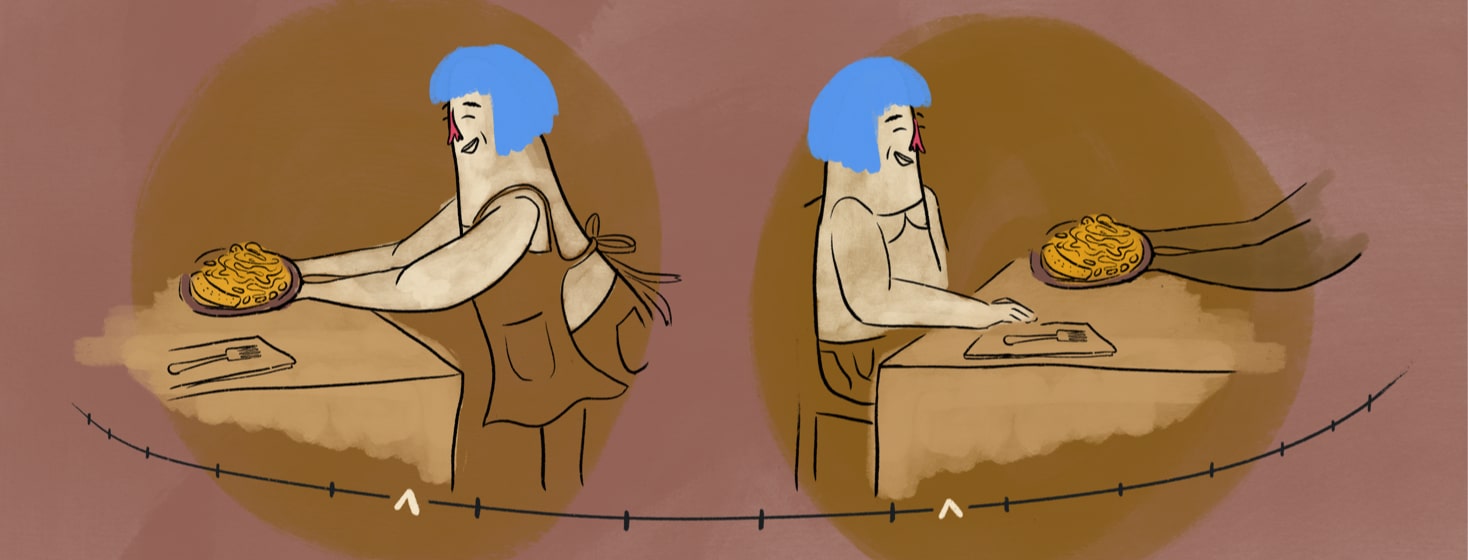Two Sides of the Parkinson’s Experience
In the past I’ve been "blessed?", "burdened?", and "frustrated?" to be a caregiver. Now it is my turn at needing a caregiver. The following is what I’ve learned from both roles:
Testing patience
P: Patience - perhaps is the most important issue for both the Parkinson's disease (PD) individual and the caregiver. Each has patience tested, often multiple times a day.
For the caregiver, uncertainty about what the PD person needs, especially when she has trouble explaining just what she wants. And for the PD person, needing, but not really wanting to ask for help with a task.
For example, what woman wants help putting on her bra? Or reaching in the cabinet for a plate that, not long ago she was able to do herself? The caregiver wants her to succeed, but patience is tested as he worries not only as she attempts this task, but with her frustration if she fails.
Coping with emotions
A: Anxiety - Both become anxious when they wonder what will happen next; how long before things get worse. The caregiver is anxious about how she will be able to adapt to the changes that are certain to come as the disease progresses. The PD person becomes more anxious as she experiences routine behavior becoming impaired.
A is also for Anger - For the PD person it is controlling anger when she is misunderstood, vague about what she needs or when the needs are not met in what she feels is "soon enough." For the caregiver controlling his anger when he’s frustrated or just "plain tired" of these tasks. Both experience the guilt that arises from feeling angry.
Daily challenges
R: Responsibility - It is often an increasing and even a tremendous load to carry as a caregiver. For the PD person, it’s the desire to be responsible for herself, her needs as long as she is able.
K: Kindness - Both might need to remind themselves that the anger and anxiety will dissipate when they remember to be kind.
I: Remember the saying "there is no 'I' in team?" This is especially true for a PD person and her caregiver. Also, the use of "I" statements to reveal feelings of anger, anxiety or loss of patience.
N: Both the PD person and the caregiver need to strive for living in the "now." Yes, things might get worse, and expectations change. But focusing on who they are and how things are just for today opens the door for joy to enter.
Focusing on the relationship
S: Both PD person and caregiver need to remember so say "I’m sorry." After expressing their anger, frustration, or lack of patience. Regret goes a long way to mend the negativity.
O: Open - Both the caregiver and the PD person need to be open to being honest in expressing or receiving the words and actions of each other.
N: No - Both need to be allowed to say "no" when they are not able or willing to respond to a request or don’t agree with the other’s words. Important also is explaining his/her response. This is where the "I" statements work best.
S: Is for how special the relationship between caregiver and of PD is. Regardless is how long they’ve known each other; this is a most intimate relationship. Two lives become connected, and they are on a journey together.

Join the conversation